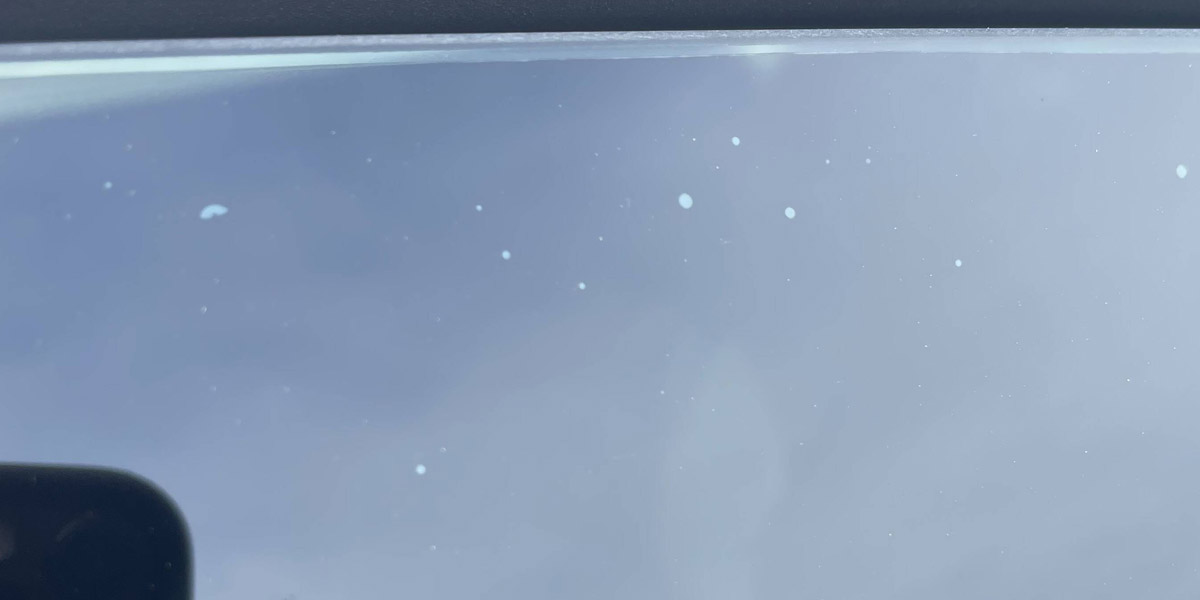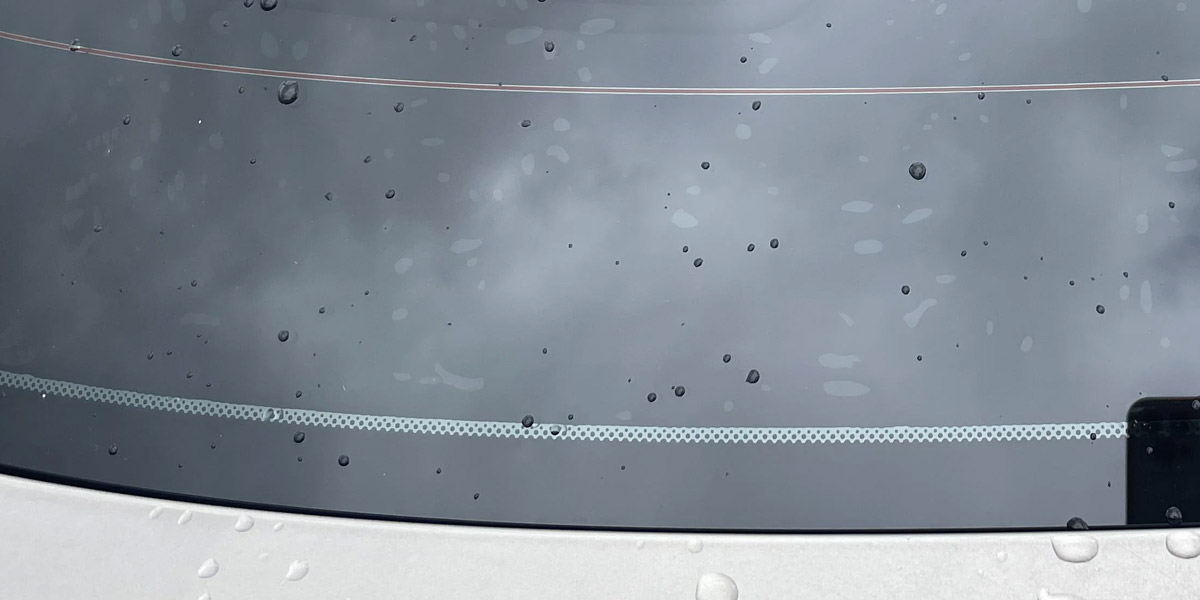
Many people end up getting window tint for their cars because it comes with many benefits. For instance, it can protect against the sun’s UV rays.
Some people may choose to try and tint their windows themselves, using some sort of over-the-counter window tint that can be bought from auto shops or hardware stores. However, if you don’t know what you are doing you may find your tint starts to peel, or could end up with a considerable number of large dust bubbles.
In this post, we will explore window tint dust bubbles, what you can do to give you the best chance of avoiding them as well as some ways to fix them.
What Are Window Tint Dust Bubbles?
Window tint dust bubbles are small dots that you notice in your tint not long after it’s applied to your windows. These little dots are generally gatherings of dust under the window film. Within the window tint industry, these tiny dust bubbles are referred to as ‘points’ whereas larger bubbles are referred to as dirt.
Before installing window tints on your car’s windows, the surface must be thoroughly cleaned. That’s because any dirt or dust left behind will lead to air bubbles forming around it.
Basically, the debris will make it hard for the tint to stick to the window. In the beginning, this may not be noticeable, but as the tint dries they come visible.
Now, tint dust bubbles will not only form when you have not cleaned the window thoroughly but can also be due to dust in the air when tinting in a windy or dirty environment.
This is why, before you install the coating on the windows of your vehicle, you should make sure the surface is sparkling clean. And you’re working in a sterile environment with no air movement.
Some dust is inevitable, in fact, it is impossible to avoid it entirely. However, by taking adequate preparation steps any dust that does remain on the window should be unnoticeable to the human eye once the window tint is installed.
Did you know that some dust bubbles may be in the window film itself? Window film manufacturers state in their document that due to the fact that some tints are made up of multiple layers of film, some dust may be present between the layers – again this is barely noticeable to the human eye from a distance of about half a metre away. Better quality films have higher levels of quality control during manufacturing to minimise imperfections in the films.
Are Dust Bubbles Normal After a Window Tint?
Sometimes, there may be a few water bubbles visible on freshly-installed window tint. They are quite small, and in a matter of weeks, they should go away. This is normal and expected.
How quickly they go away will be influenced by the amount of heat. Generally, warmer environments will allow the water bubbles to vanish faster, while it takes longer for them to disappear in cooler weather so keep that in mind if you are tinting your windows during a cold winter.
Now, while small water bubbles are not out of the ordinary, large air bubbles are, especially if they form in an older tint. In this situation, they will not go away.
Sometimes, the film will develop dust bubbles, and these are not normal after installing a window tint. Although it is not unusual to see a tiny amount of dust or lint around the edges, contamination or dirt should not be visible following the installation.
The truth is that it’s quite difficult to eliminate every single dust particle from the window. In fact, as soon as you’re done cleaning, a new particle may find its way to the surface. These particles are hard to see with the human eye and they should not affect the tinting in any way.
It’s the larger particles and pieces of contamination or dirt that become an issue. These are not normal. A professional will most likely redo the tinting if they notice any large dust spots or dirt after the installation.
How Do You Fix Bubbles in Window Tint?
Fixing the bubbles in the window tint depends on the nature of your installation. If the product was installed by a professional, you may have a warranty that will be quite helpful in this case. Keep in mind that given it is impossible to remove all dust before installation, most window film warranties and installation warranties allow for a small tolerance of dust (or points as it is also known).
If you’re in this situation, the best thing to do would be to take the vehicle back to the installer and ask for their opinion.
If the product is no longer under warranty, you can try to fix it at home. The same applies if you’ve installed the tint yourself.
One thing you don’t want to do is use a sewing needle or a pin to pick the bubbles. Whilst this might temporarily get rid of the bubble, it is sure to return once dust enters the hole you have created.
Instead, use a hard blunt object with a rounded edge that won’t scratch the tint to firmly press down around the point so that the film sticks down to the glass around the dust particle. This should make the air around the point stick to the glass instead of being an air bubble making it vanish. Unfortunately, this method is only possible with tiny points and not larger dirt contamination.
You must also make sure that you are patient when installing window tint film. If you want it done properly, you should be very careful and not rush.
If the bubbling is quite excessive, it’s best to remove the old film and install new tinting.
Keep in mind that the quality of the installation will vary. If you did a bad job from the very beginning and you didn’t install the film properly, chances are that the same thing will happen the second time. So, if you want to make sure the window tint is installed correctly and provides protection against the sun, you should consider going to a professional for help.
How Long Does It Take for New Tint Bubbles to Go Away?
You might feel disappointed after noticing new tint bubbles. Water bubbles after application are normal and will go away.
In general, it takes up to two weeks for water bubbles to disappear. The result is influenced by how much sunlight your car gets.
If the bubbling takes longer than two weeks to vanish, it may actually be dirt and will never disappear. There is considerably less chance of dirt bubbling when your tint has been installed by a professional. A window tint professional will also ensure that you don’t see any edges or light gaps in your film and that it is tucked up neatly behind your rubbers and inside your window channels. The custom-fit top and bottom edges will also ensure that your window tint goes right to the edge of your window but doesn’t peel when you put your windows up or down. This is the correct method of tinting a window which will give that factory-tinted glass look.

Why Is My Window Tint Bubbling?
There are many reasons why window tint may be bubbling. For instance, bubbles are more likely to appear when:
- The tint was installed by an inexperienced person
- The window was not properly cleaned before the installation. Thus, the tint was added on top of dust and debris.
- The window tint might not have been that qualitative
- Tint gets old and sun damaged and the glue on the tint starts to lose its tack.
Conclusion
Window tint dust bubbles exist in many window tint installations. Mostly the dust is so minor that it is unnoticeable to the human eye unless up really close.
Whilst dust bubbles do appear less when the window tint is installed by a professional – there is always a chance some dust will be under the tint no matter how experienced the installer is. In fact, most window tint manufacturers allow for some dust as part of their warranty terms. Contamination or dirt on the other hand, is never acceptable.
It’s very important to make sure you reach out to a reliable company that can install your window tint properly. Also, ensure your windows are thoroughly cleaned before the film is placed on the surface.

